

Nuts About Natto
|
When asked about Japanese food, many Singaporeans would probably answer that they enjoy it. However, there are exceptions, such as one of the most unique and divisive Japanese food – natto. The fermented soybeans have a distinct smell similar to aged cheese, as well as a sticky and stringy texture, which can put many people off. For Japanese people though, natto has been a part and parcel of their diet since they were young. It is usually mixed with soy sauce, mustard and green onions, and eaten with rice. It is said that the longer the sticky threads are, the better the quality of the natto. You may also find it added in miso soup, sushi, salad, or even pasta.
There are several theories regarding the origins of natto. The most popular theory involves Minamoto no Yoshiie, a famous general from Kyoto during the Heian period who led the campaign in Japan’s northeast prefectures. In one version, his soldiers were cooking soybeans as feed for the horses. When they were suddenly attacked, they hurriedly packed the soybeans in rice straw sacks and tied them to the horses. Upon opening the sacks a few days later, the soybeans had turned into natto, which Minamoto no Yoshiie and his men took a liking to. In another version, the general and his men taught people how to make natto on his return journey to Kyoto. Thus, the road he travelled came to be known as “Natto Road”. Today, Ibaraki prefecture in Japan is the top producer of natto. Therefore, it may come as a surprise that it is not Ibaraki but Fukushima prefecture that spends the most on natto. In fact, Fukushima prefecture has been the top spender for the past four years. The harsh winter climate of the Tohoku region has led to the people producing a wide variety of fermented food, which can be stored for long periods of time, especially before refrigerators were invented. Among them, natto is an important source of protein during winter, since soybeans contain just as much protein as meat. This also explains why the people of Tohoku would often enjoy miso soup with the addition of tofu and natto. Moreover, natto can be made quickly and easily. Besides that, natto is well-known for a plethora of health benefits. For example, it is said to be more effective than yoghurt at increasing the amount of health-promoting bifidus bacilli in the gut. It also contains other probiotics, enzymes and vitamins, which reduce cholesterol levels, reduce blood clots and fight fatigue. Upon fermentation, the soybeans produce polyglutamic acid, which contains large amounts of glutamic acid. It is these glutamates that give food umami, such as broth made from kelp. Polyglutamic acid also aids in the body’s absorption of calcium. Thus, natto is just as tasty as it is nutritious. For those who are unable to tolerate the smell, there is actually natto sold that has less smell or even aroma-free. Other ways to enjoy it that may make it more acceptable, includes having it in fried rice, or with curry. There is even dry natto, which can be eaten as a snack. If you like natto, what is your favourite way to enjoy it? |
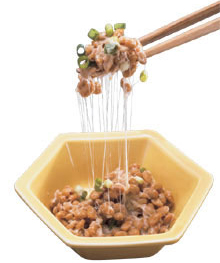 © Web Japan 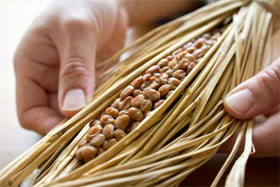 © photoAC 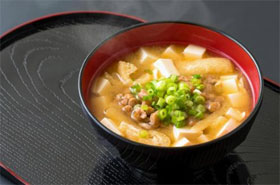 © photoAC 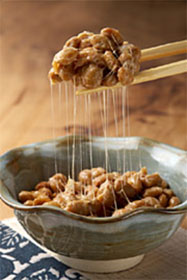 © AFLO 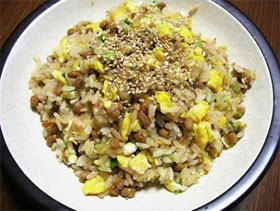 © photoAC |
Resources
|
“The Fermented Foods of Tohoku”. 2020. Government of Japan. https://www.gov-online.go.jp/eng/publicity/book/hlj/html/202005/202005_05_en.html. Shurtleff, William & Aoyagi, Akiko. 2004. “History of Natto and Its Relatives”. Soyinfo Center, Lafayette, California. https://www.soyinfocenter.com/HSS/natto1.php. “Learn about Japan’s Unique Superfood, Natto”. 2022. Japan National Tourism Organization. https://www.japan.travel/en/sg/story/natto-japan-superfood-museum-ibaraki/. “FULL OF BEANS: Natto Gains Popularity as a Health Food”. 2002. Web Japan. https://web-japan.org/trends01/article/021128bus_r.html. “Natto, Japan’s Health Food Cleans Water”. 2012. Web Japan. https://web-japan.org/kidsweb/hitech/natto/index.html. “ 「納豆」購入額“4年連続”福島市が日本一!「モモ」も断トツ、意外なものも・・・”. 2023. TBS. https://newsdig.tbs.co.jp/articles/-/318457. |
|
Japan Creative Centre 4 Nassim Road, Singapore 258372 +65 6737 0434 / jcc@sn.mofa.go.jp https://www.sg.emb-japan.go.jp/JCC/ Nearest parking at Orchard Hotel & Delphi Orchard |
 |